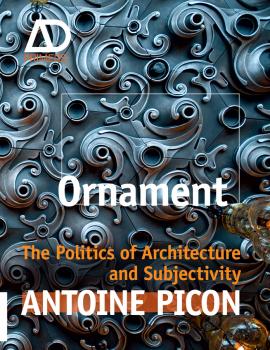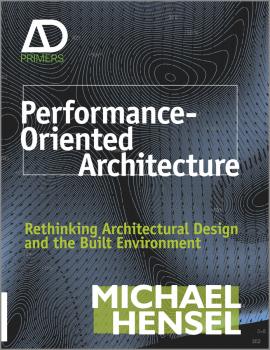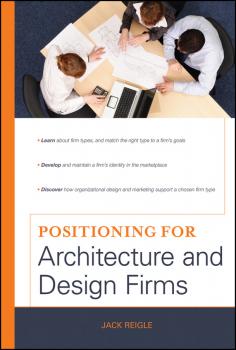ТОП просматриваемых книг сайта:
Архитектура
Различные книги в жанре Архитектура, доступные для чтения и скачиванияSustainable Transportation Planning. Tools for Creating Vibrant, Healthy, and Resilient Communities - Jeffrey Tumlin
Аннотация
The Great American Dream of cruising down the parkway, zipping from here to there at any time has given way to a true nightmare that is destroying the environment, costing billions and deeply impacting our personal well-being. Getting from A to B has never been more difficult, expensive or miserable. It doesn't have to be this way. Jeffrey Tumlin's book Sustainable Transportation Planning offers easy-to-understand, clearly explained tips and techniques that will allow us to quite literally take back our roads. Essential reading for anyone who wants to drive our transportation system out of the gridlock. -Marianne Cusato, home designer and author of Get Your House Right: Architectural Elements to Use and Avoid ?The book is full of useful ideas on nearly every page.? ? Bill DiBennedetto of Triple Pundit As transportations-related disciplines of urban planning, architecture, landscape architecture, urban economics, and social policy have undergone major internal reform efforts in recent decades Written in clear, easy-to-follow language, this book provides planning practitioners with the tools they need to achieve their cities? economic development, social equity and ecological sustainability goals. Starting with detailed advice for improving each mode of transportation, the book offers guidance on balancing the needs of each mode against each other, whether on a downtown street, or a small town neighborhood, or a regional network.
Аннотация
Once condemned by Modernism and compared to a ‘crime’ by Adolf Loos, ornament has made a spectacular return in contemporary architecture. This is typified by the works of well-known architects such as Herzog & de Meuron, Sauerbruch Hutton, Farshid Moussavi Architecture and OMA. There is no doubt that these new ornamental tendencies are inseparable from innovations in computer technology. The proliferation of developments in design software has enabled architects to experiment afresh with texture, colour, pattern and topology. Though inextricably linked with digital tools and culture, Antoine Picon argues that some significant traits in ornament persist from earlier Western architectural traditions. These he defines as the ‘subjective’ – the human interaction that ornament requires in both its production and its reception – and the political. Contrary to the message conveyed by the founding fathers of modern architecture, traditional ornament was not meant only for pleasure. It conveyed vital information about the designation of buildings as well as about the rank of their owners. As such, it participated in the expression of social values, hierarchies and order. By bringing previous traditions in ornament under scrutiny, Picon makes us question the political issues at stake in today’s ornamental revival. What does it tell us about present-day culture? Why are we presently so fearful of meaning in architecture? Could it be that by steering so vehemently away from symbolism, contemporary architecture is evading any explicit contribution to collective values?
Аннотация
Forty years on from the first moon landing, architecture in Space is entering a new era. Over the last decade, there has been a fundamental shift in the Space industry from short-term pioneering expeditions to long-term planning for colonisation, and new ventures such as Space tourism. Architects are now involved in designing the interiors of long-term habitable structures in Space, such as the International Space Station, researching advanced robotic fabrication technologies for building structures on the Moon and Mars, envisioning new 'space yachts' for the super-rich, and building new facilities, such as the Virgin Galactic 'Spaceport America' in New Mexico designed by Foster + Partners. Meanwhile the mystique of Space remains as alluring as ever, as high-profile designers and educators – such as Greg Lynn – are running designs studios drawing upon ever more inventive computational design techniques. This issue of AD features the most significant current projects underway and highlights key areas of research in Space, such as energy, materials, manufacture and robotics. It also looks at how this research and investment in new technologies might transfer to terrestrial design and construction. Space architects: Constance Adams, Marc Cohen, Ondrej Doule, Sandra Häuplik-Meusburger, Scott Howe, Brent Sherwood, Madhu Thangavelu, Andreas Vogler, Robert Zubrin. Architects: Bevk Perovic Arhitekti, Dekleva Gregoric Arhitekti, Foster + Partners, Neil Leach, Greg Lynn, OFIS architects, SADAR + VUGA.
Аннотация
As more factors, perspectives, and metrics are incorporated into the planning and building process, the roles of engineers and designers are increasingly being fused together. Sustainable Infrastructure explores this trend with in-depth look at sustainable engineering practices in an urban design as it involves watershed master-planning, green building, optimizing water reuse, reclaiming urban spaces, green streets initiatives, and sustainable master-planning. This complete guide provides guidance on the role creative thinking and collaborative team-building play in meeting solutions needed to affect a sustainable transformation of the built environment.
Аннотация
The new student edition of the definitive reference on architectural interiors Interior Graphic Standards, Student Edition is a carefully edited treatment of the authoritative Interior Graphic Standards Professional Edition. Designed and organized to give students the specific information they require, this is an essential reference for anyone studying architectural interiors. New topics include accessible design basics, computing technologies, fire-resistive construction, fire protection systems, security and communications systems, interior equipment, evidence-based design, and climate considerations. In addition, this second Student Edition offers more material on residential design, is packed with more than 1,300 informative illustrations, and includes the latest coverage for students to find real help understanding the critical material they need for the core classes required by all curriculums. Additional revisions to this edition include: Updated coverage of sustainable design and materials and ADA Standards for Accessible Design Companion website featuring online resources for students Expert advice and details for designing interior project types including commercial, residential, healthcare, retail, hospitality, educational, performance, and museum spaces, as well as existing building interiors Like Interior Graphic Standards Professional Edition, this student edition's Second Edition provides essential specification and detailing information for working inside the structural shell, covering interior partitions and floor systems, updated lighting practices, furnishings, equipment, and wall, floor, and ceiling finishes.
Аннотация
A must-have reference to create content-rich BIM objects and models A cutting-edge technology, Building Information Modeling (BIM) software allows AEC professionals to produce data-intensive 3D building models that far exceed those rendered with the 2D limitations of CAD, today's industry standard. Unlike CAD, however, no consensus has been reached among AEC industries for agreed upon guidelines directing BIM models. To fill this void, this book explores the different approaches used in designing a BIM model and incorporates them into one cohesive strategy that serves as a digital road map going forward. BIM Content Development: Details the various types of information (graphic and data) that Building Information Modeling (BIM) can gather about a building, such as its dimensions and material, its performance, its functionality, its interaction with other structures, and how often it must be maintained Presents a vendor-neutral approach to thinking about, organizing, and managing data used to create a 3D building model Covers the different methods for organizing content, such as CSI's MasterFormat®, Uniformat, OmniClass, and Industry Foundation Classes (IFC) Providing the means and methods for effective content creation, BIM Content Development offers sound guidance for graphic standards and data management solutions to maximize the ability of professionals to operate on any BIM software platform—and shows how to strengthen the decision-making process to unleash powerful tools for modeling a building's informational profile.
Performance-Oriented Architecture. Rethinking Architectural Design and the Built Environment - Michael Hensel
Аннотация
Architecture is on the brink. It is a discipline in crisis. Over the last two decades, architectural debate has diversified to the point of fragmentation and exhaustion. What is called for is an overarching argument or set of criteria on which to approach the design and construction of the built environment. Here, the internationally renowned architect and educator Michael Hensel advocates an entirely different way of thinking about architecture. By favouring a new focus on performance, he rejects longstanding conventions in design and the built environment. This not only bridges the gap between academia and practice, but, even more significantly, the treatment of form and function in design. It also has a far-reaching impact on knowledge production and development, placing an important emphasis on design research in architecture and the value of an interdisciplinary approach. Though ‘performance’ first evolved as a concept in the humanities in the 1940s and 1950s, it has never previously been systematically applied in architecture in an inclusive manner. Here Michael Hensel offers Performance-Orientated Architecture as an integrative approach to architectural design, the built environment and questions of sustainability. He highlights how core concepts and specific traits, such as climate, material performance and settlement patterns, can put architecture in the service of the natural environment. A wide range of examples are cited to support his argument, from traditional sustainable buildings, such as the Kahju Bridge in Isfahan and the Topkapí Palace in Istanbul to more contemporary works by Cloud 9, Foreign Office Architects, Steven Holl and OCEAN.
Аннотация
The Architect's Brain: Neuroscience, Creativity, and Architecture is the first book to consider the relationship between the neurosciences and architecture, offering a compelling and provocative study in the field of architectural theory. Explores various moments of architectural thought over the last 500 years as a cognitive manifestation of philosophical, psychological, and physiological theory Looks at architectural thought through the lens of the remarkable insights of contemporary neuroscience, particularly as they have advanced within the last decade Demonstrates the neurological justification for some very timeless architectural ideas, from the multisensory nature of the architectural experience to the essential relationship of ambiguity and metaphor to creative thinking
Аннотация
An essential guide for a firm of any size to effectively position itself in the marketplace For an architecture or design firm to survive and prosper in the new economy, it needs to redefine and reinvigorate its position in the marketplace. With dozens of how-to cases, examples, and guidelines, Positioning for Architecture and Design Firms provides the entire menu of tools, plus the inspiration needed, for making the changes required to stay competitive in the design world. Offering strategies for leveraging a firm's strongest assets into the formulation of a successful long-term plan, this book breaks with tradition to introduce the latest concepts specifically developed for building future business opportunities in an unstable economic landscape marked by shifts in competition, technology, and client expectations. With a wealth of information targeting the subject of positioning, readers will learn: Why the aftershocks of the Great Recession are likely to linger, and what you can do about it in relation to your firm's success How the coming generational shift will change the design business What positioning is, and how it needs to be developed to support and implement your strategic vision How your firm can establish a robust identity and operating model The importance of your firm's essential purpose How to turn your marketing department into a true marketing system, transforming it from production mode into an integrated positioning machine Why it is important to engage in advanced research and open innovation initiatives Addressing issues of firm identity, including an understanding of how to create the market positioning desired, Positioning for Architecture and Design Firms shows how a design firm—large or small, new or well established—can position itself to gain greater control over its destiny, and reach loftier levels of achievement. Learn about firm types, and match the right type to a firm's goals Develop and maintain a firm's identity in the marketplace Discover how organizational design and marketing support a chosen firm type
Аннотация
Otl Aicher's writings are explorations of the world, a substantive part of his work. In moving through the history of thought and design, building and construction, he assures us of the possibilities of arranging existence in a humane fashion. As ever he is concerned with the question of the conditions needed to produce a civilised culture. These conditions have to be fought for against apparent factual or material constraints and spiritual and intellectual substitutes on offer. Otl Aicher likes a dispute. For this reason, the volume contains polemical statements on cultural and political subjects as well as practical reports and historical exposition. He fights with productive obstinacy, above all for the renewal of Modernism, which he claims has largely exhausted itself in aesthetic visions; he insists the ordinary working day is still more important than the «cultural Sunday». Wolfgang Jean Stock










